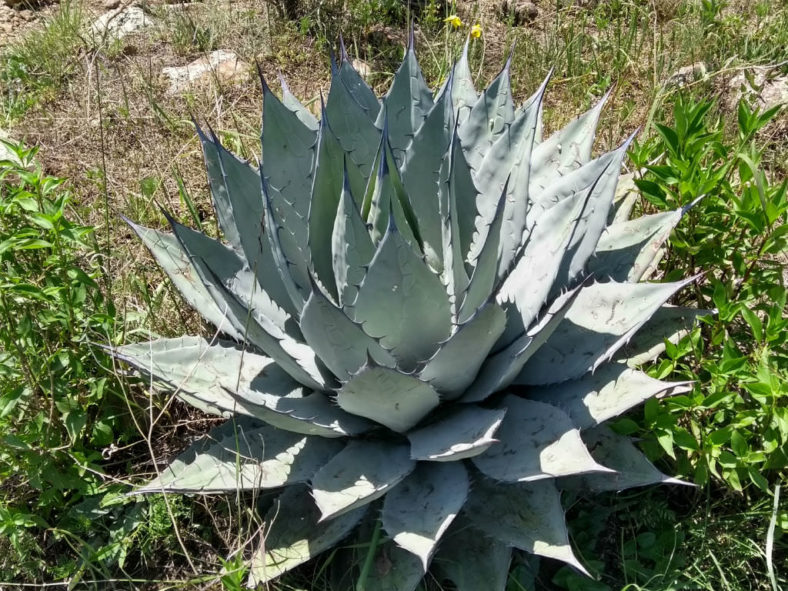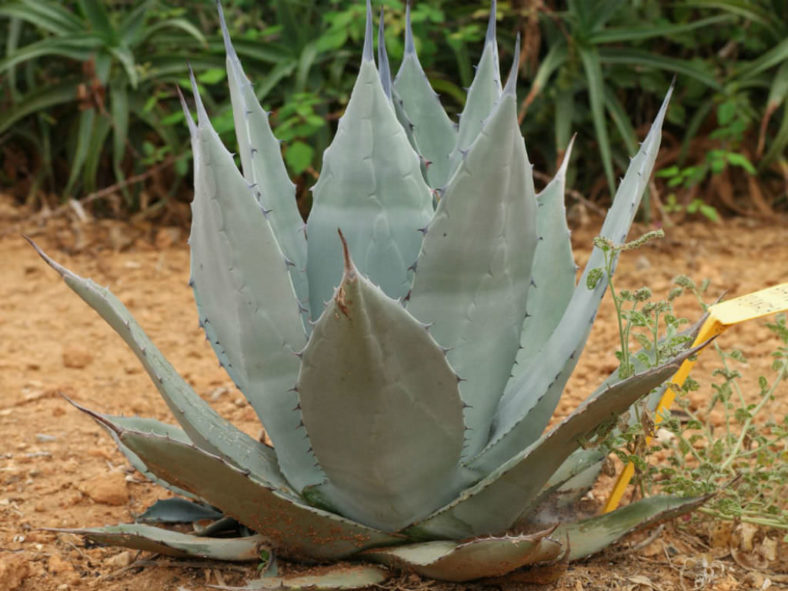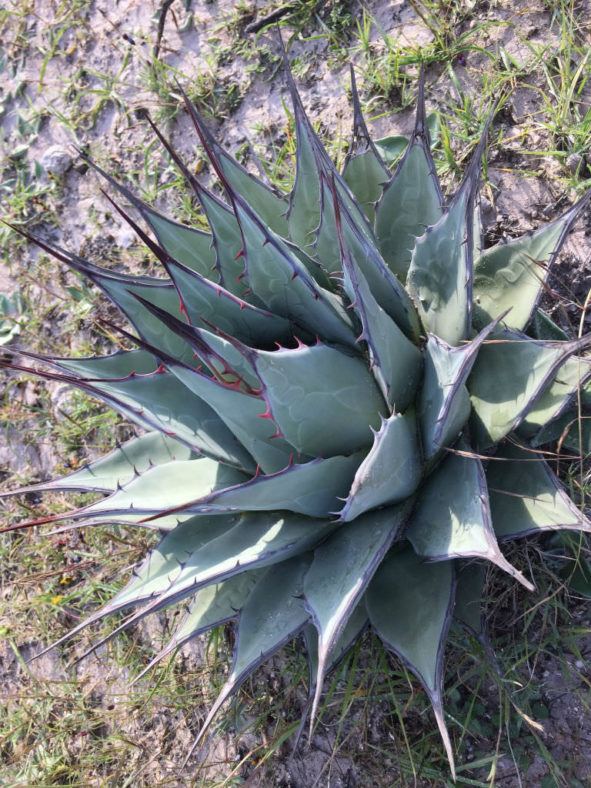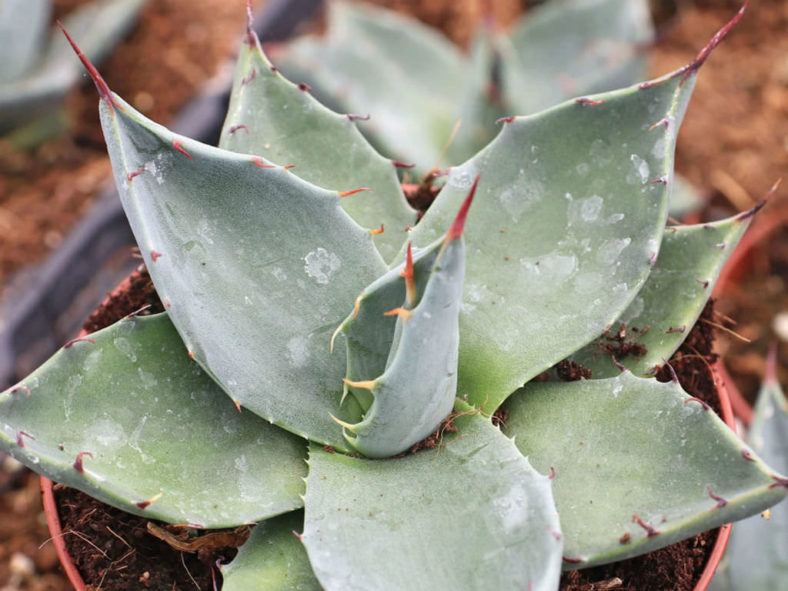Scientific Name
Agave applanata K.Koch
Common Name(s)
Gray Agave, Gray Century Plant
Synonym(s)
Agave applanata var. spectabilis, Agave cinerascens, Agave spectabilis
Scientific Classification
Family: Asparagaceae
Subfamily: Agavoideae
Genus: Agave
Etymology
The specific epithet "applanata (ap-plan-AY-tuh)" means "flattened, horizontally expanded" and almost certainly refers to the appearance of young plants but does not apply to adult plants.
Origin
Agave applanata is native to the middle elevations of the mountains in Central Mexico. It is mostly found in Veracruz and Puebla, but also in Chihuahua, Durango, Queretaro, and Oaxaca.
Description
Agave applanata is a succulent plant that forms a usually solitary rosette of silvery-blue to gray-green leaves with sharp, dark brown to black marginal teeth and a long, dark reddish-brown terminal spine that becomes greyish with age. The rosette can reach up to 6.6 feet (2 m) in diameter and occasionally produces a few offsets. The leaves are marked with bud imprints and can measure up to 3.3 feet (8 m) long and 7 inches (18 cm) wide.
The flowers are bright yellow, shortly tubular, and appear in clusters on a tall spike in spring, usually after 15 to 25 years. The flower spike can grow up to 26.2 feet (8 m) tall.

How to Grow and Care for Agave applanata
Light: These plants require full sun to part shade. If you are growing Agaves indoors, choose a bright, sunny window with as much sun as possible. Agave plants love going outside from spring to fall.
Soil: Agaves will tolerate most soils as long as they have good drainage but prefer sandy or rocky soil.
Hardiness: Agave applanata can withstand temperatures as low as 10 to 40 °F (-12.2 to 4.4 °C), USDA hardiness zones 8a to 10b.
Watering: Mature plants are very drought tolerant. From spring to fall, water thoroughly your Agave when the soil mix becomes dry. In winter, water sparingly about once a month. Plants in containers require more frequent watering than those in the ground.
Fertilizing: Give your Agaves a small amount of fertilizer in the spring during the first two years.
Repotting: When the pot becomes full of roots, it has become pot-bound. If you notice your Agave becoming pot-bound, repot it with new soil in a pot slightly larger than the old one.
Propagation: This succulent is usually propagated by seeds or offsets, sometimes produced during flowering. Sow the seeds in spring. The best time to remove the offsets is in spring and summer.
Learn more at How to Grow and Care for Agave.
Toxicity of Agave applanata
Agave applanata is not toxic to humans but can be mildly poisonous to children and pets.
Cultivars of Agave applanata
Links
- Back to genus Agave
- Succupedia: Browse succulents by Scientific Name, Common Name, Genus, Family, USDA Hardiness Zone, Origin, or cacti by Genus
Photo Gallery
Click on a photo to see a larger version.


